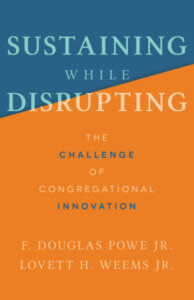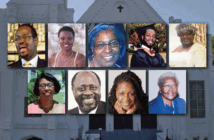Doug Powe and Lovett Weems of the Lewis Center staff say that successful and lasting change is likely to come through evolution rather than revolution. Therefore, successful change leaders are both innovators and sustainers who give adequate attention to the traditions, people, programs, and assets that make innovation possible.
Change is inherent in our theological heritage. People of faith are always seeking the new humanity, new creation, and New Jerusalem that God has for us. Successful and lasting change however comes more through evolution than revolution. Genuine change involves continuity.
Most congregations operate out of histories that will shape their futures even when they move in new directions. Even so, evolutionary leadership can produce revolutionary results, although it appears revolutionary only in retrospect. People look back and say, “We could never have dreamed this when we first started.”
Leader as sustainer and innovator
Doing God’s will as the leader of your congregation will be shaped by the context in which you are serving and the season of the church’s life in which you and God’s people find yourselves. You do not always have a choice as to whether you will primarily be a sustainer or an innovator, and the reality is that you will be challenged to be both.
Few leaders manage well the tension between sustaining a tradition and guiding innovation toward new initiatives. The skills to maintain and improve ongoing ministries while exploring and implementing new ministries are crucial. Leaders needed today for the new church face the reality that not only does leadership require both efforts, but the two endeavors require different skills.
Ongoing traditions provide continuity and assets that make innovation possible
Pitting established programs against new initiatives rarely produces change, however. Ongoing operations and ministries cannot and should not be allowed to languish as bold new ventures arise because ongoing traditions often provide continuity and assets that make innovation possible. In fact, the “way things are” that leaders so frequently react against may be among the greatest assets leaders have to move into the future. These assets are often easy to take for granted. Just think about what some of them might be:
- People. Maybe they are not as many, as young, as diverse, or as future-oriented as we would like, but people’s absence, for the most part, would not strengthen the church.
- Money. Maybe it is not as available as we would like but still, without money, the church would be weaker.
- Facilities. Maybe they are not in great shape or configured for the future but, all things being equal, it is better to have facilities than to not have them.
- Culture. Maybe it is not as healthy or forward-looking as we might like, but we need a culture to carry change, and rarely is a culture so devoid of potential that values and themes from history cannot be a bridge from what is to what is needed.
- Reputation. Maybe we don’t have the best reputation but being a known entity in the community can establish credibility and open doors.
- Systems. Maybe they are not as efficient and productive as you might like but staying connected to existing systems to help carry a vision for the future can be more worthwhile than starting from scratch.
- Staff and volunteers. Maybe they are not as gifted, energetic, or cooperative as you may wish but, if change is needed going forward, they provide an established base from which to bring it about.
- Programs. Maybe the efforts are not exactly what is needed and perhaps are not going as well as they might but new leaders need to resist the temptation to view what is happening upon their arrival as ordinary compared to new ideas that are innovative.
You can easily see that sustaining leadership is as necessary as innovative leadership. Each can help and support the other. And a leader can show no favorites because, together, sustaining and innovative efforts are essential for a church’s future. The church needs the fruits of both sustaining and innovative leadership, and neither can replace the other or be practiced to the exclusion of the other if a church is to enhance ministry in a productive way.
 This article is excerpted from Sustaining While Disrupting: The Challenge of Congregational Innovation by F. Douglas Powe Jr. and Lovett H. Weems Jr. (Fortress Press, 2022). Used by permission. Available at Fortress Press, Cokesbury, and Amazon.
This article is excerpted from Sustaining While Disrupting: The Challenge of Congregational Innovation by F. Douglas Powe Jr. and Lovett H. Weems Jr. (Fortress Press, 2022). Used by permission. Available at Fortress Press, Cokesbury, and Amazon.






